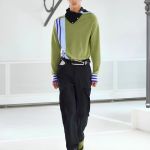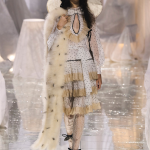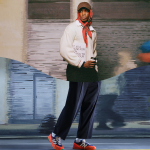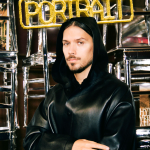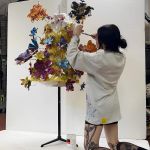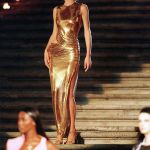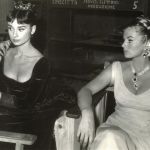
Is there still room for fashion in Rome?
From Valentino's Couture to the latest edition of Altaroma
July 15th, 2022
Space means expanding (or shrinking) disproportionately within a more or less defined time and in places, the links of which, turn out to be inescapable for understanding fashion. «23 years in a day, the Spanish Steps, Rome, the place where there is no time limit because everything and everything together exists here», wrote Pier Paolo Piccioli in reference to the Haute Couture 2022 show, The Beginning. After years of absence, Valentino has returned to show the very place where the fashion house was born in 1959 from the creative genius of Valentino Garavani and the managerial expertise of Giancarlo Giammetti, in Rome, the city whose rhythms so slow and relaxed seem to clash with the typical insatiability of the fashion world. Yet until a few years ago things were not exactly like that. Going back to 1949 (the year that has gone down in history as mirabilis), there were the Fontana sisters designing clothes for Linda Christian and there were rumors of a Hollywood on the Tiber, of an Italian fashion that had managed to attract a host of celebrities from all over the world by disengaging itself from the stylistic trappings of French fashion.
Audrey Hepburn, Ava Gardner, Ingrid Bergman, all were won over by the full skirts and empire dresses designed by Gattinoni, the atelier founded in Rome in 1946 by Fernanda Gattinoni. Roberto Capucci, on the other hand, belonged to a generation of architect tailors who, with his atelier on Via Sistina and his geometric box-dresses made of synthetic fibers, had managed to create an aesthetic in antithesis to Dior's new look. Not to mention the fact that, as early as the 1920s, Fendi existed and was primarily engaged in the production of leather goods. More surprisingly, Bulgari jewelry had been snaking its way since 1884, opening a real page in rewriting the rules of world jewelry. By the mid-1960s from Florence, the city where the first fashion show was organized by Count Giovanni Battisti Giorgini in 1951, the haute couture houses moved presentations to their ateliers in Rome. Meanwhile, in Milan, a phenomenon was taking hold that would change the Italian fashion scene forever, that of prêt-à-porter. Italy, in fact, had two capitals: Rome for haute couture and Milan for prêt-à-porter.
With the growing success of the latter, most companies abandoned haute couture because of the excessively high costs and went into big business, moving the fashion shows to Milan. Rome was left with the few brands that continued to be involved in haute couture, mostly intent on satisfying the demands of rich ladies, politicians' wives and showbiz women. Out of them all, the names of Gattinoni, Gai Mattiolo, Roccobarocco, Lorenzo Riva, and Raffaella Curriel stood out. But even today, in reality, Rome retains its mixed identity of haute couture and artisanal micro-realities. Just think of some of the most esteemed designers of the moment: Alessandro Michele relaunched Gucci through a continuous and obsessive archaeological restoration of Rome's places and past. «I love Rome for being a hybrid, plural creature, not containable in any label. I am grateful to her because she suffers from an extraordinary dissociative identity disorder. Because its creative chaos is indispensable nourishment for my work», he had told Repubblica. Just as Silvia Venturini Fendi - in 2016, on the occasion of the company's 90th anniversary, she financed the restoration of the Trevi Fountain - and Pier Paolo Piccioli have spent themselves in the personal reworking of Rome's charm, including by contributing to the restoration of its immense aesthetic heritage. Recently Bulgari's Unexpected Wonders campaign again explored the impact of Rome's monumental scene, entrusted to the acting of Zendaya and Anne Hathaway and the direction of Paolo Sorrentino.
Rome, however, always remains in the background, subservient to a narrative that fails to shake it from the glories of a mythology focused on the exaltation of a bygone past. If, on the one hand, contexts such as Altaroma - born as a historical event and passed, in 2002, to an organization committed to the promotion and scouting of emerging talents involving the ICE agency, the Lazio Region, the Rome Chamber of Commerce and Vogue Italia - work on bridging a gap within the city itself, on the other hand it lacks an editorial structure made up of journalism, creative agencies and communication in the strict sense that knows how to exalt Rome's potential. It is struggling to open up, in other words, a dialogue that is able to encompass a wide-ranging discourse on fashion. Beyond what has been the media exposure of the Donna sotto le stelle period (1986-2003), Rome has failed to respond effectively to the internal evolutions of the fashion system - internationalization and delocalization of production being the main causes - effectively losing its voice in the haute couture scene. Valentino's Couture 2022 fashion show rekindled a general form of enthusiasm in Rome, restoring an imaginary connected to fashion and contributing to the financing of the restoration of the mosaics of the Baths of Caracalla. This latest edition of Altaroma also seems to have undergone a reshaping in organizational layout.
For the selection of the eleven finalists of the 18th edition of Who is On Next?, an interdisciplinary jury was involved composed of industry experts such as Susanna Ausoni (Fashion Stylist), Carlo Capasa (President Camera Nazionale della Moda Italiana), Simonetta Gianfelici (Fashion Consultant & Talent Scout Head of Project Who is on next? Altaroma), Alessandro Michele (Creative Director of Gucci), Sara Sozzani Maino (Head of Special Projects Vogue Italia and International Brand Ambassador CNMI and Silvia Venturini Fendi (Artistic Director of Accessories and Menswear Fendi, President Altaroma). The fashion show for the awarding of the project winners took place on the Capitol Hill, certainly launching a signal of a fashion revival in Rome. The question is to understand how much the city is willing to commit itself to a long-term project capable of redrawing a map that can set aside the memorable images of the past to point to a new creative path, bringing Rome out of its role as a mere postcard and giving it, at the very least, a role as a co-leader on the fashion map in Italy.










